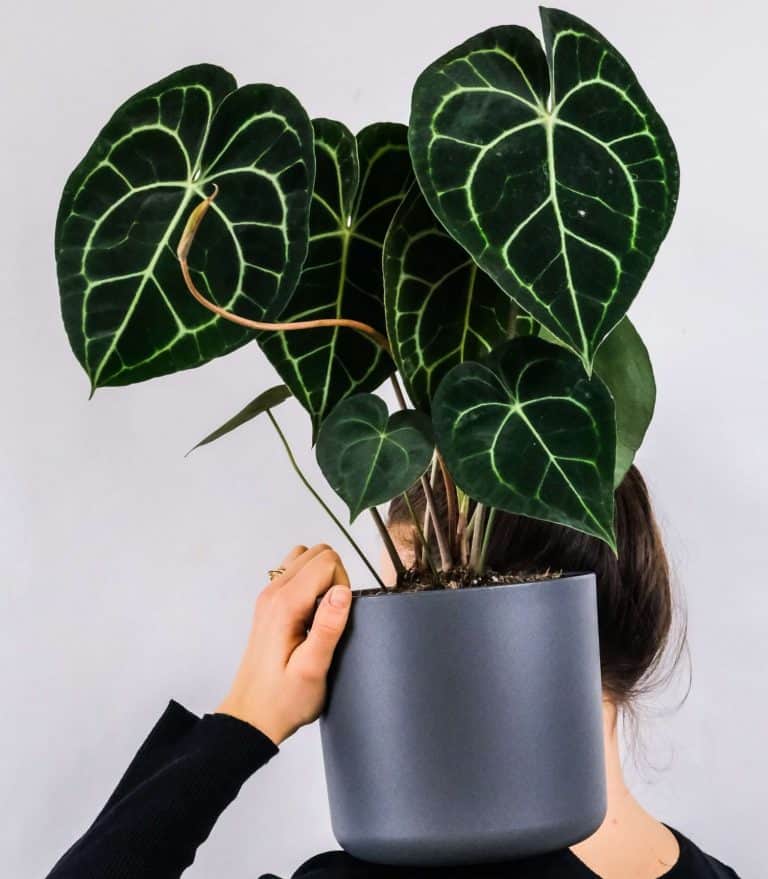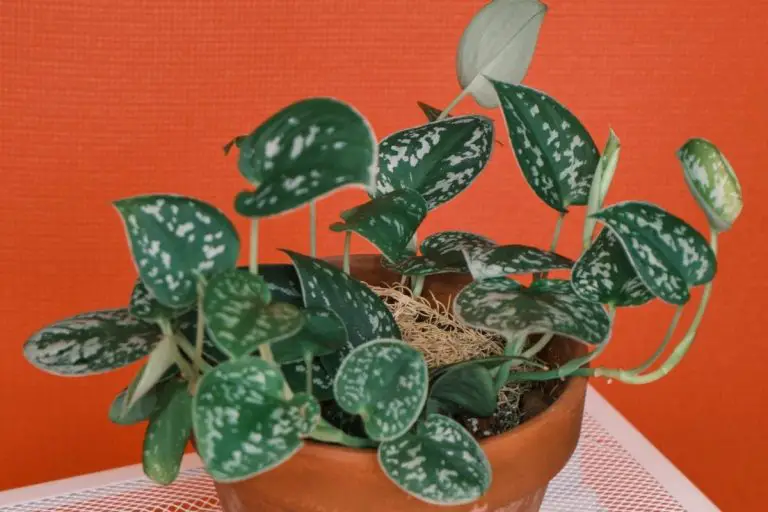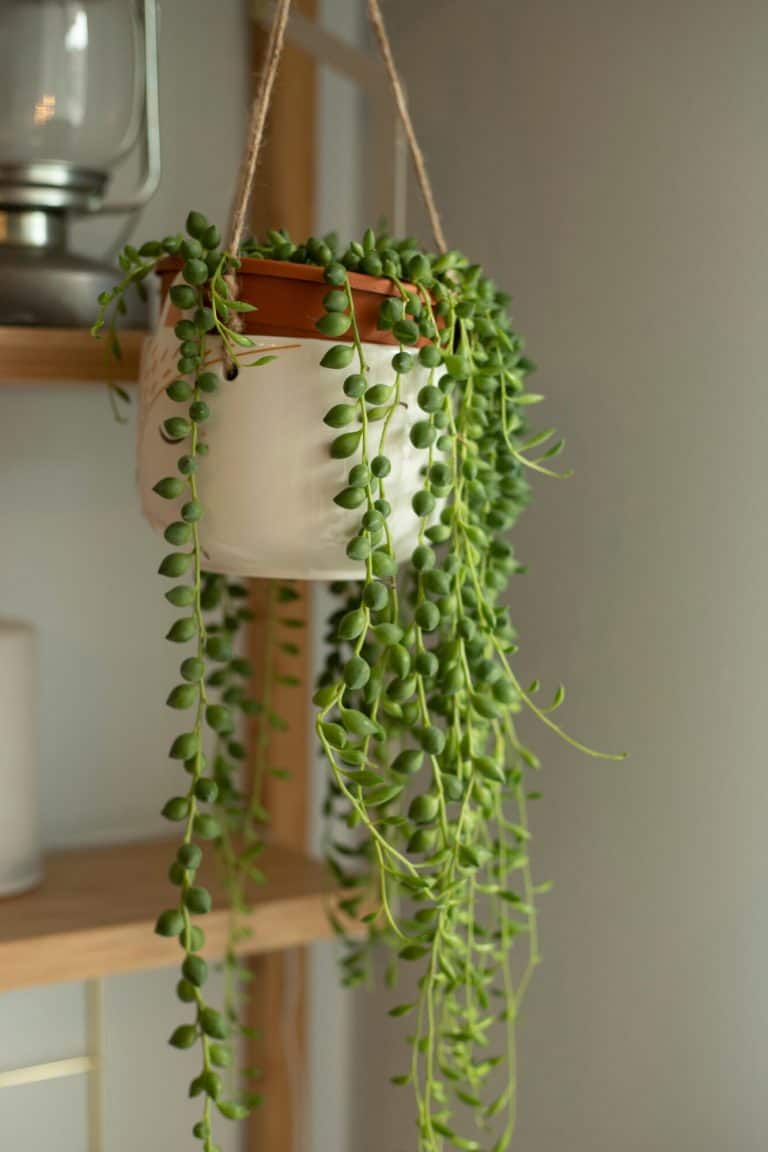Pilea Glauca – The Ultimate Indoor Plant Guide
Pilea Glauca
Pilea Glauca is a derivative from the big family Pilea. Pilea Glaucophylla is also known as Silver Sprinkles and Aquamarine, it’s widely recognized by the sprinkling of silver little leaves that look like lily pads with red stems.
Despite not having an official name yet, the red stem Pilea has already won an audience of admirers.
The genus Pilea is acquired from the Latin word ‘pileus’, which means “felt cap”, as the sepal covers the achene. Though it has many names, the reason it is called Glauca Pilea is still not entirely known.
DISCLAIMER
Some of the links on here are affiliate links and I may earn if you click on them, AT NO EXTRA cost to you. Hope you find the information here useful! Thanks.
Related Articles:
- The Best Practices to Care for Philodendron Birkin
- Snow Queen Pothos – Easy to Follow, Grow Care Guide
- Philodendron Florida Ghost – The Most Comprehensive Guide
- Philodendron Giganteum – Complete Care Guide
- Crassula Hottentot – Practical Care Guide
Types of Pilea
Pilea Glauca is one kind of Pilea flowering plant genera.
There are numerous types of Pilea, among them are Pilea Microphylla, Pilea Cadierei, Pilea Involucrata, Pilea Repens, and others. Most Pilea species are kept as houseplants for their ornamental foliage shaped like lily pads.
Pilea Glauca also goes by the name Pilea Libanensis or Silver Sparkle Pilea which has dark green leaves with seemingly silver sprinkles on top.
How delightful does that sound?
What Do Pilea Glauca Basically Need?
The Pilea Glauca plant has basic needs just like any other houseplant, which are soil, water, and light.
Soil
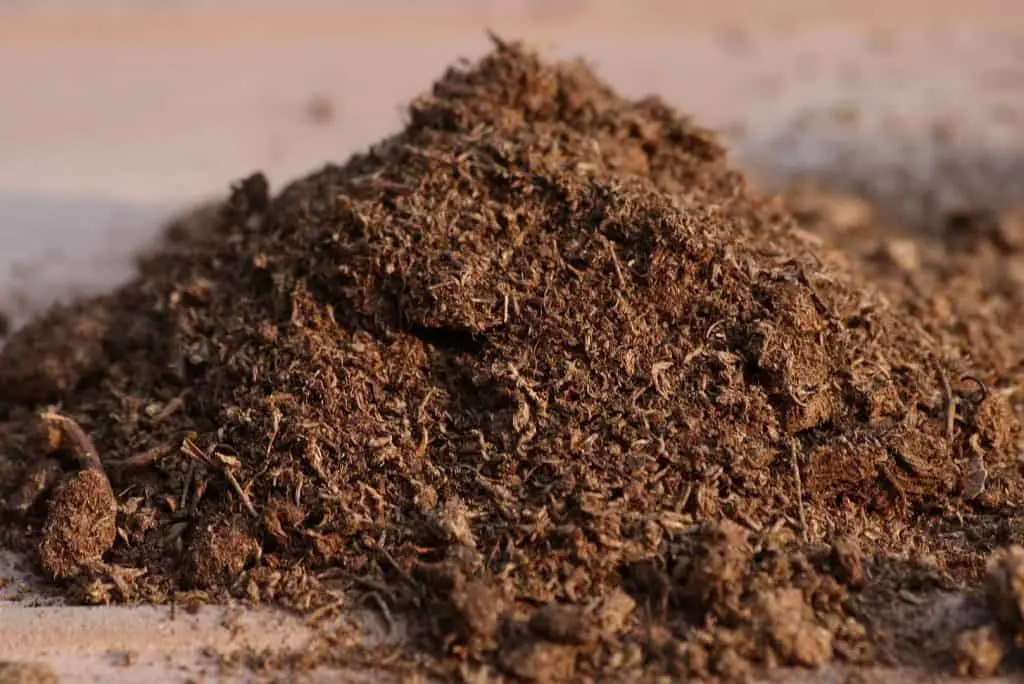
The soil needed for a Pilea Aquamarine should be a mix that has good water retention and can drain well. This plant is not overly needy, and thus, as long as the soil has a good moisture level, it should work just fine.
However, there is a suggestion that you can try!
A 1:2 mix of peat and perlite should work well. Other than that, you can also try a peat moss-based commercial potting mix that is not too dense.

Water
For watering, make sure to never leave the soil of the Pilea Glauca Aquamarine plant dry. This plant favours moisture and water but is never overwatered. You can water roughly once a week, or if the 2 inches down of the soil becomes dry in summer.
You can use a plug-in self-watering spike that will gradually water your plant releasing moisture into your plants’ soil.

In winter and fall, you can expect to water much less, that is around 2-3 weeks between watering according to your house conditions.
To really have an idea for your plant watering needs, getting a 3 in 1 pH, moisture and sunlight meter will provide you with accurate readings as to whether your plant requires immediate water.

Light
As the Pilea Silver Sparkle plant originates from the dense canopy in the tropics of South America, it prefers a shady environment.
When keeping the Pilea Glauca plant at home, ensure it receives indirect sunlight.
Direct sunlight could potentially burn your plants’ leaves, so try to avoid this as much as possible. You can filter the direct sunlight using mesh nettings or anything that gives partial sunlight such as window blinds.

These basic Glauca Pilea care tips should not be overlooked. If you have prepared the least, then you’re en route to growing a delightful-looking plant!
Rooting Methods
Pilea Glauca is seen as a generous plant considering how easy it is to root. There are two types of rooting methods, which are as follows:
Rooting In Water
Once your Aquamarine Pilea plant grows a little tall, you can trim some stems and soak them in the water for about 1-3 weeks until the roots have developed. It is best if you place them in purified water. and ensure the water is changed every few days.
Using a propagating test tube to place your plant stems can be a great way to soak your plant stems, not to mention how neat and tidy they will look.

You can begin transferring your plants once you notice roots emerging, but they still need to regrow in soil. You can place them in their own pot or together with their mother plant.
Rooting In Soil
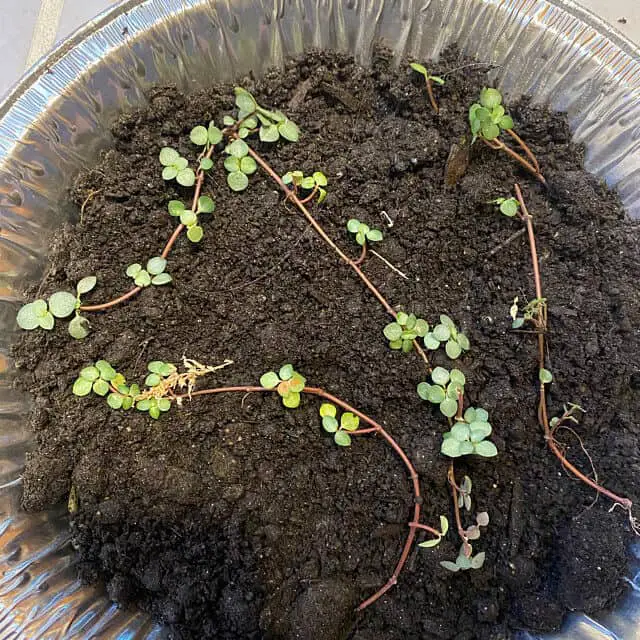
If you want to root them in soil, you can do so by placing them in another fresh soil mix. Ensuring the soil isn’t too compact, you can let it sit in the loose soil with good airflow to encourage good rooting.
Make sure you water frequently keeping the humidity level high and perfect. You can maintain a high humidity level by covering it with a transparent plastic bag or cling film, but take it off periodically to ensure good ventilation.
Rooting is an important step as it promotes growth and helps your plant to stay healthy. If rooting is not done properly, your Pilea Glauca could be root-bound and problems like root rot could begin to emerge.
Best Time to Repot Your Pilea Glauca
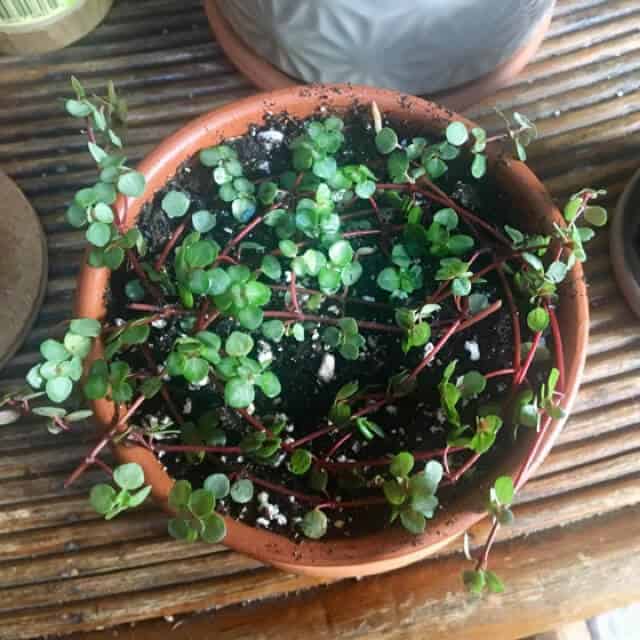
Repotting is best done in the springtime, every 2 years, or when the plant is starting to become rootbound. You should re-pot it whilst keeping the old soil, but make sure there is enough room for fresh new soil. That should be the ideal condition to encourage root growth.
Transfer your plant into a pot 2 inches or larger than its previous pot.
Make sure there is a good drainage system and water frequently for your plant to not get dry. Ultimately, terracotta pots are porous and aesthetically pleasing

When repotting, you can maintain the old potting mix, while adding the new mix with a combined ratio of 1:2, 1 part peat, and 2 part perlite. This should give your Pilea Glauca a fresh start.
This Perlite by xGarden is excellent and very affordable.
Tips for Pilea Glauca Care
To grow a healthy and lush Pilea Glauca plant, you don’t necessarily have to do too much. Providing basic fundamental needs such as a comfortable humid environment, temperature, and some fertilizers can go a long way to ensure a healthy plant.
Humidity
The ideal humidity level is between 60-90%. You can opt to use a humidifier to ensure your plant is thriving in optimal conditions, but even if you don’t, your Pilea plant will still survive but it’s not great.
We recommend this mini Humidifier by Geniani, a very good value for the price!
Temperature
As for the temperature, you can keep your house temperature to 55-80°F (12-26°C), which should keep your plant nice and happy to grow in your home.
Fertilizers
Pilea Glauca Aquamarine needs proper fertilization to survive. Fertilizing once a month should be sufficient.
You can use an all-purpose houseplant fertilizer, liquid concentrate at half strength every time you water in spring and summer. If you use mineral fertilizer, fertilize every 15 days in spring and summer as well.
This Liquid Fertilizer by Purived is a must-have, promotes growth and your plants will love it!
The Pilea Glauca plant does not need to be fed in winter. Every time you want to fertilize your plant, be sure to water first to avoid chemical root burn and yellowed leaves.
The Growth of Pilea Glauca
The indoor Pilea Glauca plant most commonly has small leaves, sizing up to 4 inches wide. It can grow to a maximum of 12 inches in height. Due to its small size, it is best suited as a decorative houseplant.
Problems Related to Pilea Glauca
Caring for any houseplant requires you to anticipate problems that can arise and have sufficient knowledge to overcome them properly. Here are some problems and methods to combat such situations for your Silver Sparkle Pilea care!
Leaf/Vine Loss
This problem could be due to a lack of watering.
Glauca Pilea prefers moist soil, so under-watering could lead to such issues of sudden leaf/vine loss. Increase the amount of watering for your Pilea Glauca plant, being careful not to flood it!
Yellow Leaves
Yellowing leaves can occur both from the top and from the bottom. If the yellowing happens from the top, it could be a sign of the wrong watering method.
You should water the plant bottom-up, which means from the bottom of the soil, not from the top down! If you fix this, the chances of your plant growing better are increased!
However, if your leaves are yellowing from the bottom, this is a sure sign of overwatering. You have to check if the bottom soil is retaining water and root rot is happening. Try not to overwater your plant and ensure proper soil drainage by having the correct soil mixture to allow water and air through.
Your soil needs to breathe too!
Browning of Leaf Tips
This problem is related to the dryness in the air or infrequent watering.
Combat this by increasing the humidity level in your Pilea Aquamarine plant care, especially in winter where cold dry air is inevitable. You can also try placing a pebble tray with water and stones method to overcome this issue.
Scorched Leaves
Scorched or burned leaves can be due to high and intense exposure to direct sunlight. Your Silver Sparkle Pilea plant likes sunlight, but too much direct exposure will burn its leaves. You can observe this when your leaves are dry or the foliage becomes brown.
Combat this by placing your plant in a shaded area or filtering out the direct sunlight to reduce the amount of light intensity
Things You Need to Grow a Healthy Pilea Glauca
In order to care for a happy and healthy Pilea Glaucophylla, you need to make sure you have the basic needs in check with the extensive care knowledge listed below:
- Nutritional mix of soil
- Adequate watering schedule
- Sufficient indirect sunlight
- Appropriate level of humidity
- Comfortable temperature
- Liquid concentrate fertilisers
Having secured all the requirements listed above, you are on your way to cultivating a beautiful Pilea Glauca Aquamarine to decorate your house with!
Things to Watch Out For
Like any other plant, your chic Pilea Glauca can also catch diseases and be aware of other unfortunate consequences as well.
Diseases
Pilea Glauca can catch frequent diseases like root rot, leaf-spot disease, powdery mildew, and botrytis (grey mould).
These diseases are commonly caused by excessive moisture, so avoid the occurrence of wet leaves and soil. You will be able to prevent such diseases from attacking your precious Glauca Pilea plant!
Pests
Pests can come and infest your plant, which includes spider mites, mealybugs, root mealybugs, aphids, and scale. All these can be avoided only if you have a healthy plant!
However, if they do get in contact, control your pests by keeping their population as low as possible to stop them from ruining your houseplant.
You can rub alcohol on the leaves to kill and ward off pests. You can also spray a mixture of rubbing alcohol and water (a cup to a quartz ratio) directly on the pests.
This alcohol by Viva Doria is a great budget-friendly option!
For heavier infestation, you can use light horticultural oil or gentle insecticidal soap, which are most effective when wet.
Pilea Glauca and Pets
Unlike most other houseplants, Pilea Glauca is a non-toxic plant, and thus safe for your beloved pets to be around. Pilea Glauca + cats /pets are a great mix, as both are pretty and cute at the same time. If you have them both at home, you’re in for a treat!
Why Is My Pilea Glauca Dying?
Spotting crispy brown leaves on your Glauca Pilea is a sign that your plant is dying.
There are a few measures you can take to save your dying plant. By simply removing the dead leaves and continue cultivating your plant well in the best conditions possible.
Make sure you pay attention to other problematic signs and remedy occurring problems right then and there to avoid the worst. Ignoring your plants’ signals will increase the chance of your plant dying on you. Check out Problems Related to Pilea Glauca
Things to Consider Before Caring for a Pilea Glauca
Before deciding to care for a Pilea Glauca Aquamarine, you should first and foremost consider the:
Type of Pot
Pilea Glauca is a vine plant, placing it in the hanging pot will be the most suitable place for it to be in.
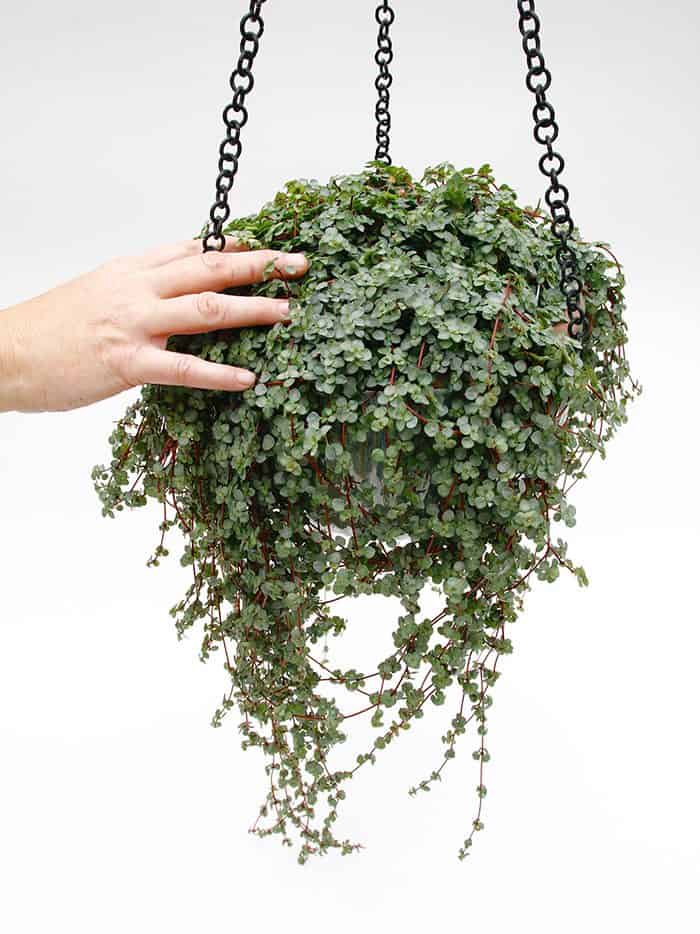
As it is a small plant, hanging it shouldn’t be a problem. It is recommended that you use terra-cotta or clay pot as it is a strong and porous material and not to mention it being aesthetically pleasing alongside your Pilea Glauca Aquamarine!
Suitable Location
A suitable location is imperative as you should already know by now how your Pilea Glauca feels about light and humidity. It needs light, but not bright and direct sunlight.
Make sure you have a special allocated spot to place your Glauca Pilea, enough for it to consume filtered sunlight.
Make sure to observe the humidity level is ensuring the location is not too dry or too wet. An unsuitable location can lead to numerous problems and will eventually lead to your Pilea Glauca plant’s demise.
Where to Get One
Treat yourself to a petite Pilea Glauca plant by purchasing online from the following sites. You can also buy them offline, but listed below are sites for online Pilea Glauca purchasing:
- Anything Grows Cochrane Garden Store Inc.
- Miniature Garden Shoppe
- Garden Goods Direct
- Etsy
- FittoniaMania
- GardenMart4u
- Nurserylive
- Giromagi
- Noah Garden Centre
A Pilea Glauca plant’s price ranges from $3.50 to $11. If you want to buy online, rest assured that delivery will be done very carefully so you don’t have to worry about the condition of the delivered plant!
Conclusion
In conclusion, the Pilea Glauca is a very cute and petite vine houseplant that you might just want to own right away! Looking at it will make you feel happy as its unique features can be a marvellous sight for any sore eyes.
Make sure you understand and anticipate the efforts needed to commit when cultivating this beautiful plant. If and when you are ready, get started and the only way is forward and up!







![How To Harvest Oregano Without Killing The Plant? [Personal Experience!]](https://aboveandbeyondgardening.com/wp-content/uploads/2022/10/How-To-Harvest-Oregano-Without-Killing-The-Plant-7-768x442.jpg)

